Top 3 materials of outdoor cable covers!
Taking effective cable protection measures outdoors is as important as indoors. Wires and cords need to be protected to survive in changing environmental conditions.
Mechanical damage, water, chemicals, temperature, etc., can cause permanent damage to outdoor cables if they are not protected correctly.
Unprotected wires can also be hazardous to people present in the surroundings. Their poor insulation can be life-threatening. Therefore, people should use cable protectors to ensure the safety of people as well as the wire.
A variety of materials is used to construct cable covers. People should check their characteristics before choosing them. Here are the different cable protectors based on their construction materials.
Do you want to know more about this topic? We also have an article talking about cable protectors used in different locations.
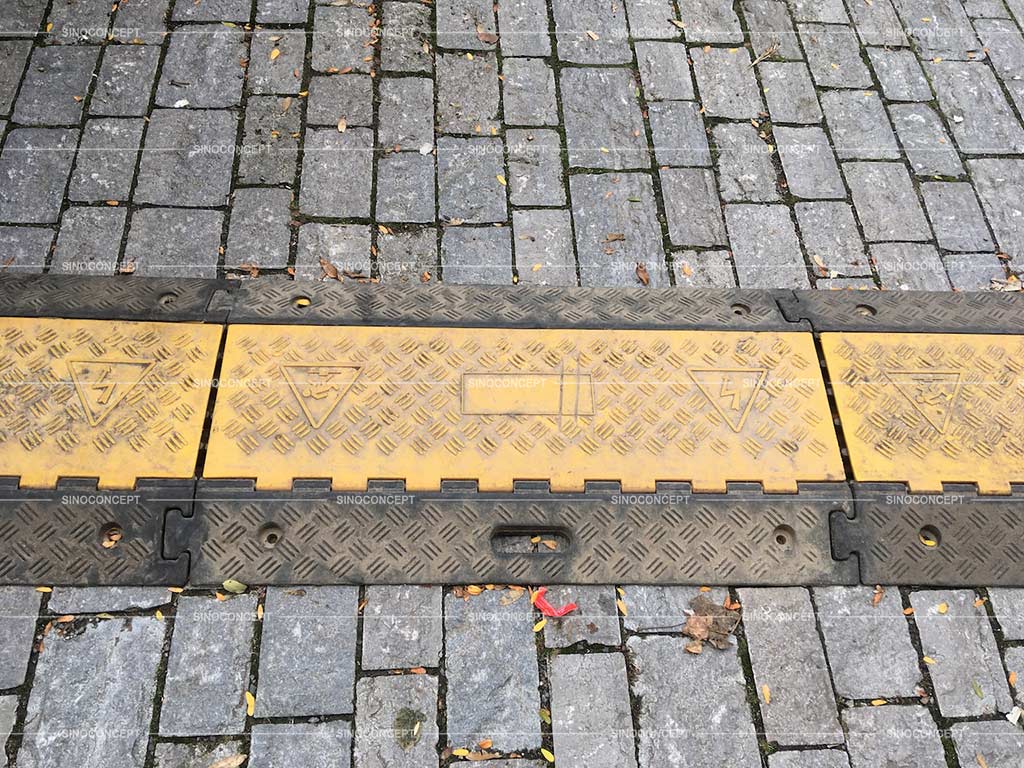
Rubber cable covers
When installing a CCTV camera, security alarms, or any other appliance outside the home, the first thought that may come to a person’s mind is the protection of fragile wires.
Suppose cables and cable accessories are left exposed to the environment. In that case, different environmental elements, such as UV rays from the sun, rain, chemicals, etc., can disturb data distribution (if the cable is used to transfer data) or the overall appearance and functionality of wires.
You need something waterproof, durable, and sturdy enough to shield coaxial cables, control cables, or industrial cables. This is where the rubber cable protector comes to help. Rubber is a soft and flexible material that will not develop cracks when placed over the floor.
Though rubber is a soft material, its softness is lesser than the softness of polyurethane material, which is also used for constructing cable covers. Rubber is also cheaper than polyurethane, making it a more economical option.
A cart moving over a rubber cable cover will likely produce less noise than one moving over a solid and hard cable protector. Rubber cable covers usually have yellow and black colours, which enhances their visibility. So the pedestrian can see them even when they are several feet away.
This cord management solution comes in different sizes, allowing users to cover cords and hoses of different sizes. It is a good cable organizer as it organizes large cable bundles and makes the area look tidy.
A rubber cable protection solution can have one or more channels. Speed bumps that also have cable channels resemble this structure.
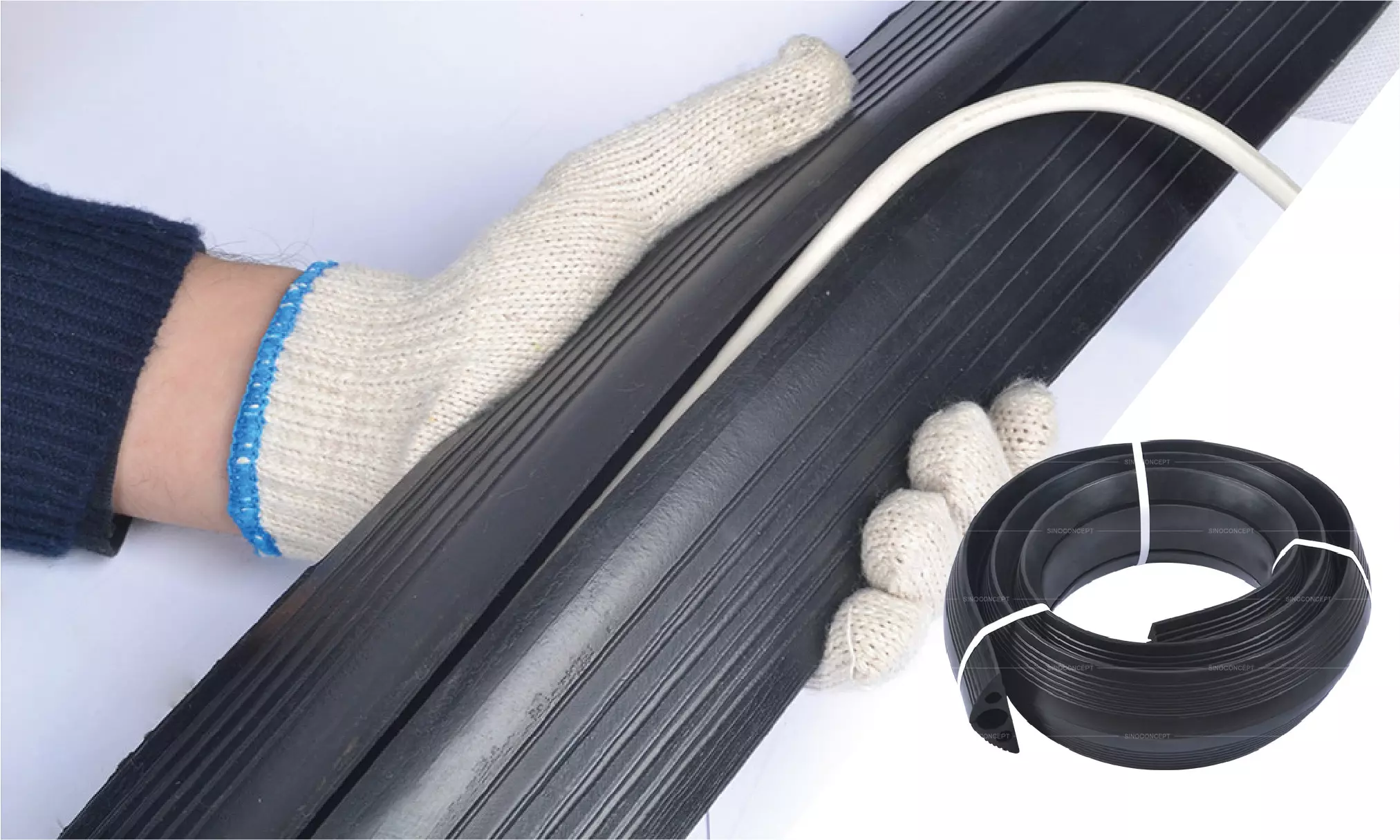
You have already read a good part of this article, 👀
We've
got the impression that you like it. 🙂
👇🏻
IF YOU ARE LOOKING TO WORK DIRECTLY WITH A MANUFACTURER,
FEEL FREE TO CONTACT US. WE ARE VERY HAPPY TO HELP!
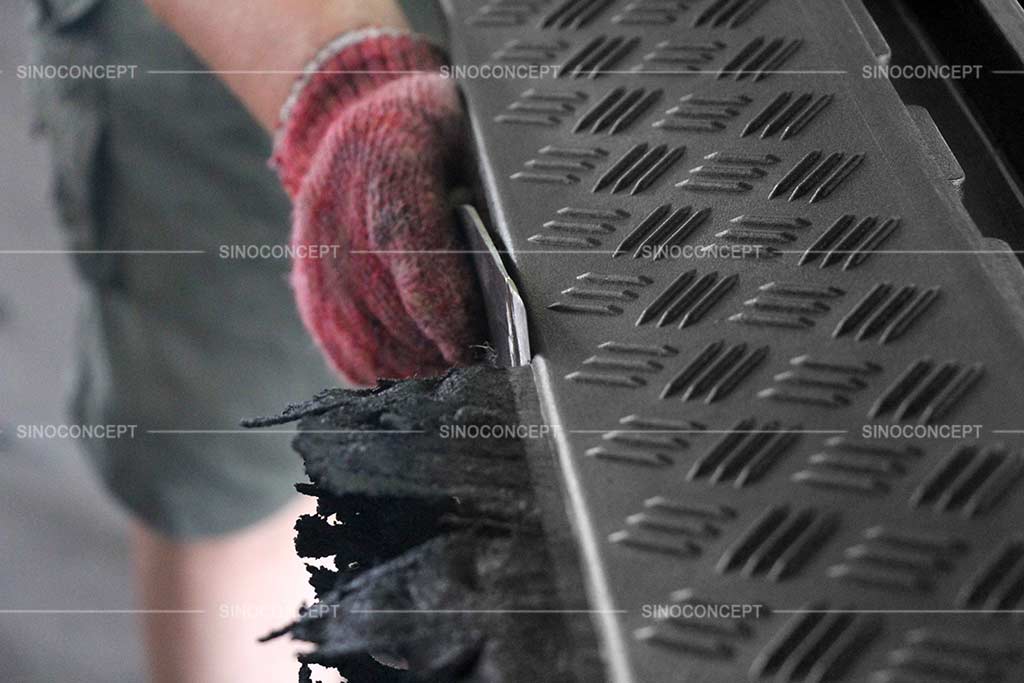
Metal cable covers
Another material that covers electrical cables, speaker cables, cable cords, power cables, data cables, network cables, Ethernet cables and any other sort of wires and cords in outdoor settings is metal, such as aluminium, etc.
Such cable protectors are hard compared to the other forms. They are less flexible and may cause noise when vehicular traffic or foot traffic passes over them.
Metal is a durable material that can protect custom cables, rubber cables, or any cables from the damaging effects of environmental factors such as temperature, chemicals, etc.
They are commonly found in construction sites where heavy machinery is used. Such places have a high trip hazard. They require efficient cable management solutions to create a safer workspace for labourers. An electrical wire can also easily get destroyed under cartwheels, etc., used on construction sites.
So, metal wire covers also help reduce the effect of carts.
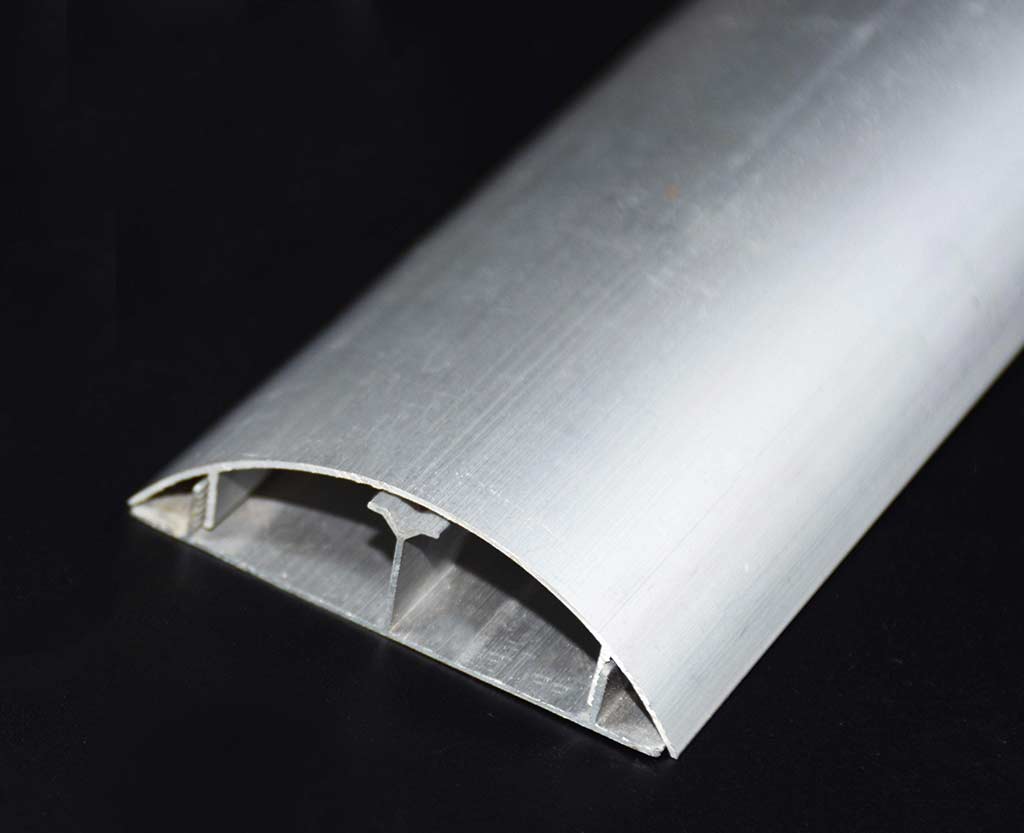
Wooden cable covers
Wooden cable covers are less common in outdoor settings, but they are still used in low-traffic areas where the weight of wheeled or foot traffic is low to moderate.
They are preferably used to cover wires and cords in areas where the floor is also wooden. This way, they match their surroundings and do not affect the floor’s appearance much.
Different kinds of wood make a wire cover for cable management. However, oak is the most popular option. It is available in different colours. Wooden cable covers are usually used for low to medium-diameter cords.
Wood shrinks in low temperatures, and it expands in high temperatures. Therefore, you should use wooden cable protectors where a temperature change is not extreme.
This non-metallic material can cover a wire cable to offer protection against the impact of shoes. It also helps in protecting the underneath floor.
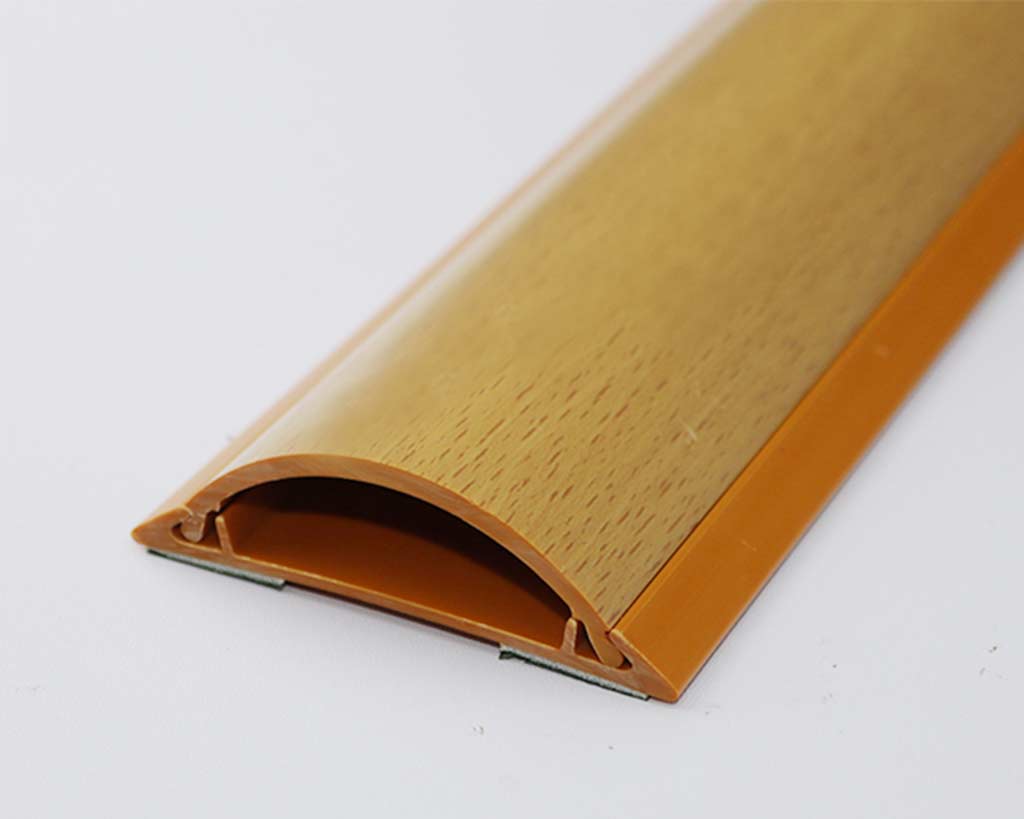
Other materials used for outdoor cable cover construction
Many materials are used to manufacture components of a cable management system. Connectors, nylon cable ties, conduit, switches, cable clamps, cable clips, cable trays, cord covers, cable ducts, ramps, cable tapes, shrink tubing, etc., can be found in metallic (aluminium, etc.) and non-metallic (PVC, rubber, etc.) materials.
Non-metallic materials other than the ones mentioned above are polyurethane and polyethene. These are two popular forms of plastic used to make cable management system components.
You should check their characteristics before choosing any of them to protect your cable wires.
- PU: The best thing about polyurethane is that it is soft and can fit well on uneven floors or ground. It is a durable material and can withstand the harshness of the environment. Consider a PU cord cover if your outdoor cables tangle often and pose a tripping hazard.
- PE: Another material that’s used for wire management system components like cable trays or cable protectors is polyethene (PE). It has more hardness and rigidity than PU, so its durability is also lower. You should choose it to cover home cable, optic fibres, coaxial cable, patch cords, and other wires in low-traffic areas.
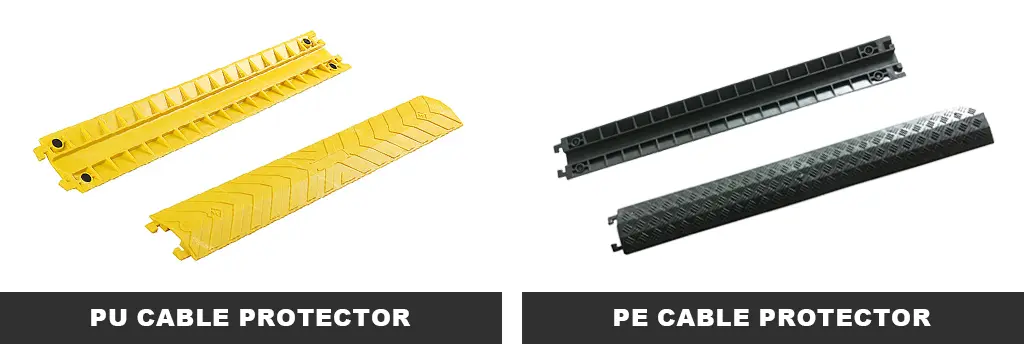
Benefits of using outdoor cable covers
Outdoor cable covers have many advantages. Some of these benefits are explained below:
- Give the area a tidier look: If there are bundles of cables spewed across your driveway, then it may not create a good first impression of your brand or company in front of your customers, investors, etc. You should manage these cables using cable protectors to create a tidier space.
- Reduce the chances of tripping: Cables spread across the floor increase the chances of tripping. However, you can prevent tripping accidents by using cable protectors. They will help you make the environment a safe place for pedestrians.
- Increase longevity of cables: If you have invested in cables and wires, you should also consider increasing their lifetime. One of the best ways to do that is by using cable protectors to reduce the damaging effects of heavy traffic and environmental elements.
- Protect machinery: Loose and unprotected cables are risky for expensive equipment and machinery they are connected to. If someone trips upon them, they may accidentally break or damage the equipment.
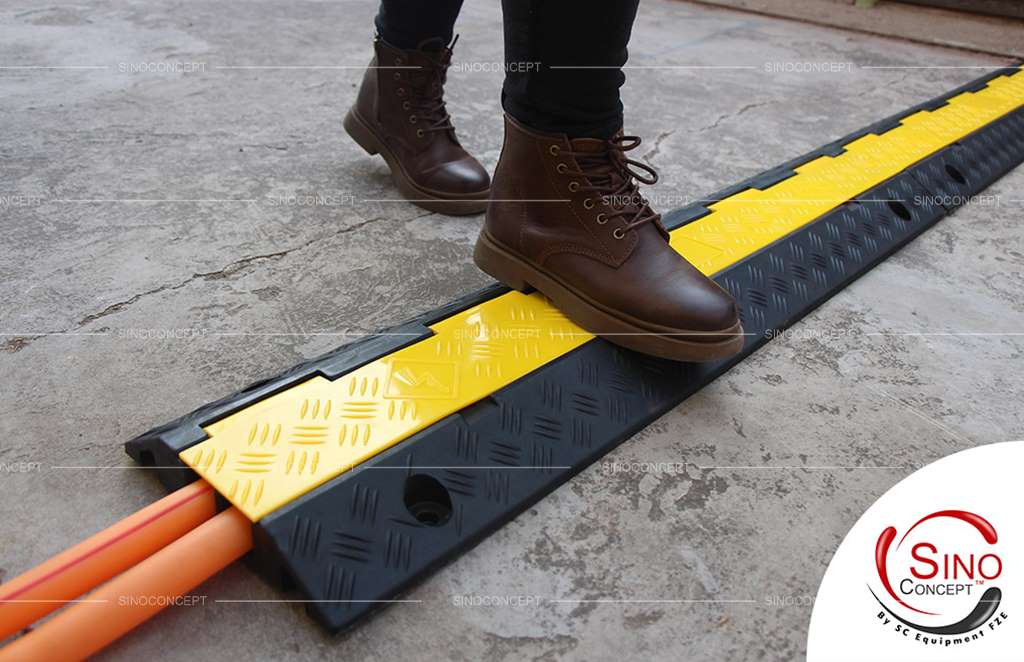
Conclusion
Cable covers are available in the market in different materials. Rubber, PU, PE, and metal are a few examples of these materials. Each material has its own characteristics, which makes it unique. Some materials are more durable and flexible compared to others.
People should evaluate the features of these materials before purchasing cable protectors. They should buy protectors considering the environmental conditions of the area where they want to use them.
Polyurethane and rubber are soft and flexible materials. Cord covers made up of them are durable and available in variable dimensions. They are suitable for different outdoor settings and conditions.
👇🏻
IF YOU ARE LOOKING TO WORK DIRECTLY WITH A MANUFACTURER,
FEEL FREE TO CONTACT US. WE ARE VERY HAPPY TO HELP!





















